David Kinnaird

David enjoying a coffee-break in the foyer of the venue with Nick.
“After Christmas and New Year festivities, when the rest of the world is going back to work, what could be better than a flight to Malta? We had the promise of some watery sunshine whilst the UK suffered a January deluge, a great hotel and a chance to study and think about boats with a European ensemble cast of Sailing superstars.

The Avengers assembled at 0900 sharp on Wednesday morning, hotel level 4, in classic conference rooms, leather pads, glasses, water bottles a projector and our instructor and guide Leon.
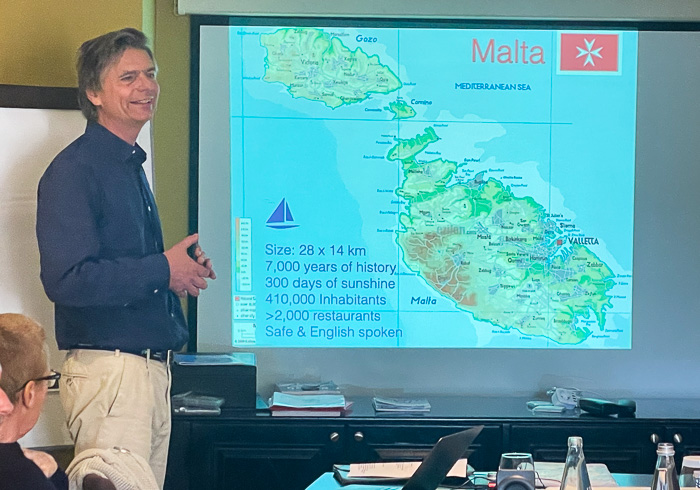
Initial sparring ensued as we gently probed and tested the limits of others’ sailing superpowers.Leon’s exuberant introduction settled nerves. He has a philosophical approach to sailing mixing the ying of mastery of the elements with the yang of mastery of technology. Leon’s wife Gaby, a professional psychologist, also features with thoughts on how a husband and wife can create an efficient crew and still somehow stay in love.
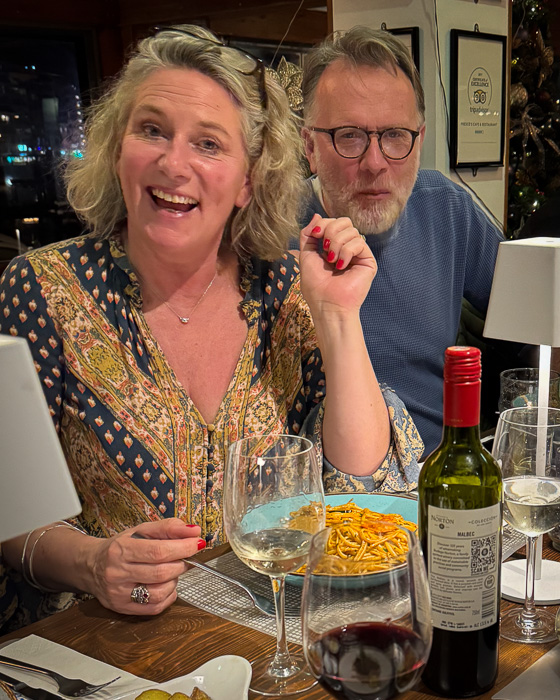
David brought his lovely wife Lisa to Malta, enjoying the 5-Star hotel and the island while David was working hard in the classroom. Lisa and David will sail on Leg 6-2024 together with Eva and Jan, who both participated on the Yachtmaster Theory course as well.
Introductory hors d oeuvres were soon over and we settled into the stodgy main course of the International Regulations for the Prevention of Collisions at Sea (IRPCS, or more usually, the COLREGS). Arranged in 37 Rules, they form a slim volume when written down - they have an elegant, almost Victorian prose and are rooted in common sense, with an overriding requirement to always observe good seamanship to avoid collision regardless of what the rules might say.However- they have ruined many a midshipman’s night - the endless jumble of light shape and soundsignals simply have to be learned by heart.
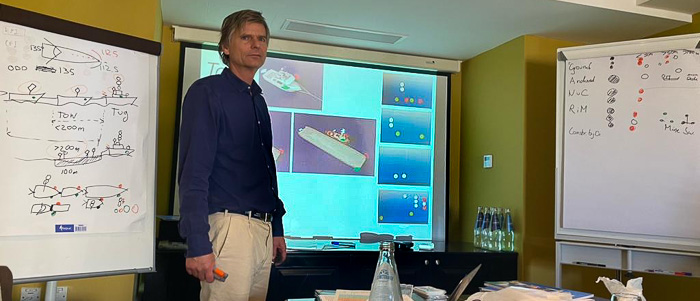
Leon trying his best to put all the ColRegs into perspective, using flip-charts and Keynote presentations as well as giving us hints that could help us how to remember them all....
Our lovely Swedish lady Eva, a veteran of Regina Laska, here tried her first attempt at bribery to ensure an exam pass.

Eva giving a copy of the 100-years-history book of Swedish sail cruising, where Leon's uncle was featured.
She should not have worried - by Thursday morning we had all grasped enough to secure at least the required 46 out of 60 marks.But just what are the starboard aspect lights for a vessel fishing with a Purse-Seiner??!!
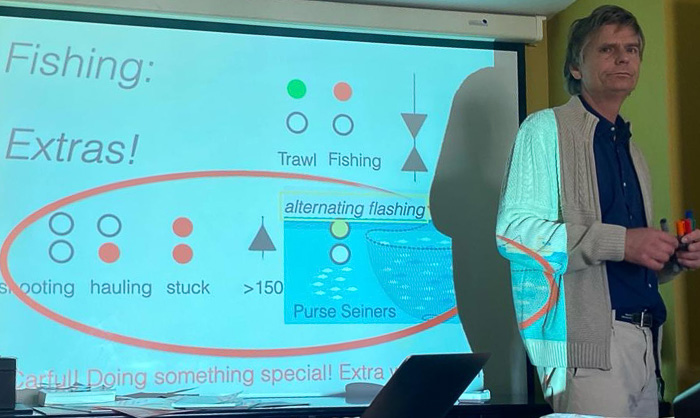
With the feared Colregs conquered, we started on chart work proper.We unfolded training chart 3 and looked upon the Northern Territories, vincent Islands and Southern Peninsular- together forming “DaySkipperLand”.
We started to get familiar with these new ports and places.Port Victoria and Fraser.Jackson Bay. Seal Rock.We spotted mountains named after famous sailors (mount Ainsley!)
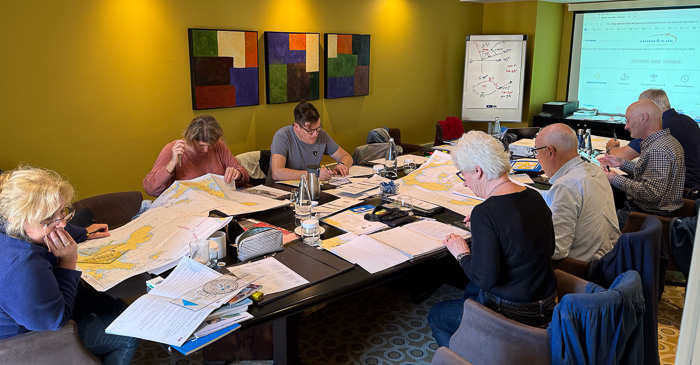
As sun and moon align, the sea breathes in an out on its 6 hourly cycle, tied to the 28 day cycle of the moon. As the earth rushes around underneath sea held bulged and static by the moon’s pull, tidal currents are created. Understanding the natural harmony of tides made them at once more accessible and friendly.This is our earth. It is said that mariners returning to the Channel or Solent after far-flung and tideless voyages marvel once again at the power of the cleansing tides and enjoy the nautical discipline needed to navigate them safely.
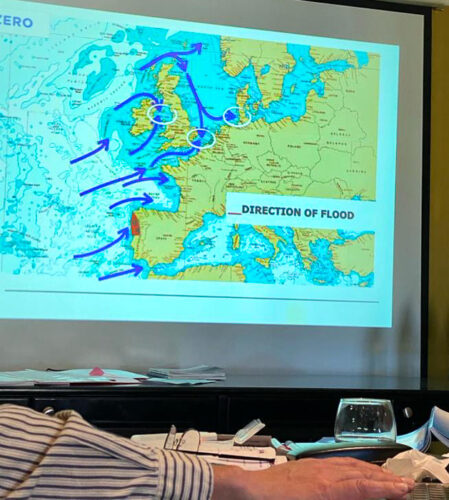
We learned to plot Estimated Positions (let nature take you) and its twin “Course to Steer” (what do we need to do to fight nature).We learned the difference between (T) (M) and (C) and when to add and subtract the deviation and variation to get the right one. We also started to learn some interesting whispered and gentle German swearing as Martin and Brigitte wondered exactly what they had signed up to back at Düsseldorf Boot in 2023...
The charts filled steadily with 2B pencil lines, rubbers rubbed, confidence grew. Leon provided real world examples of where and when he had actually made use of these techniques.
The group had started to gel. Sailing superpowers put to one side we began to get to know one another. We sat for long meals at long tables at great restaurants and learned about each other’s lives in Sweden, Switzerland, the UK, Germany and Austria.
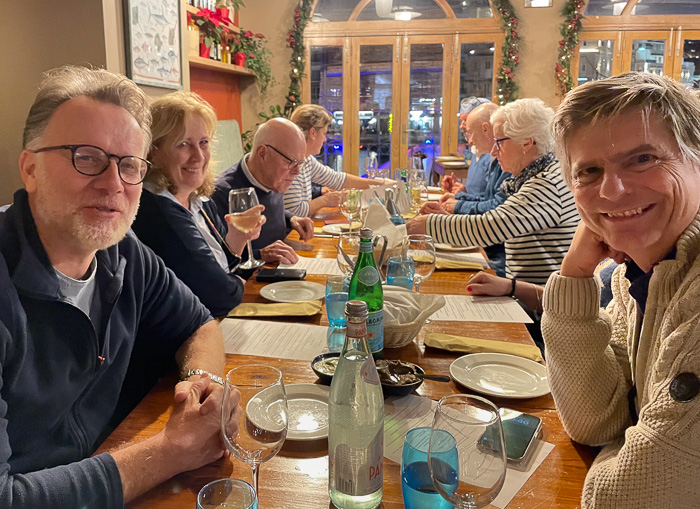
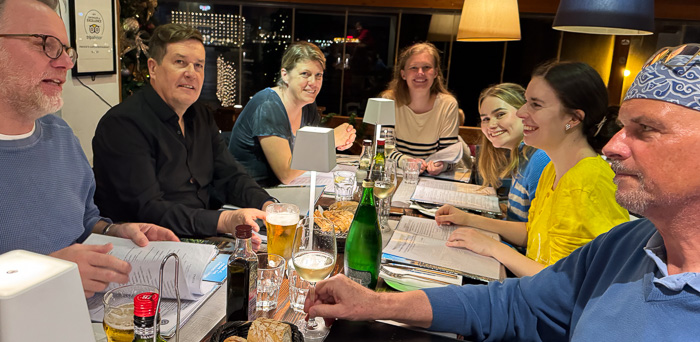
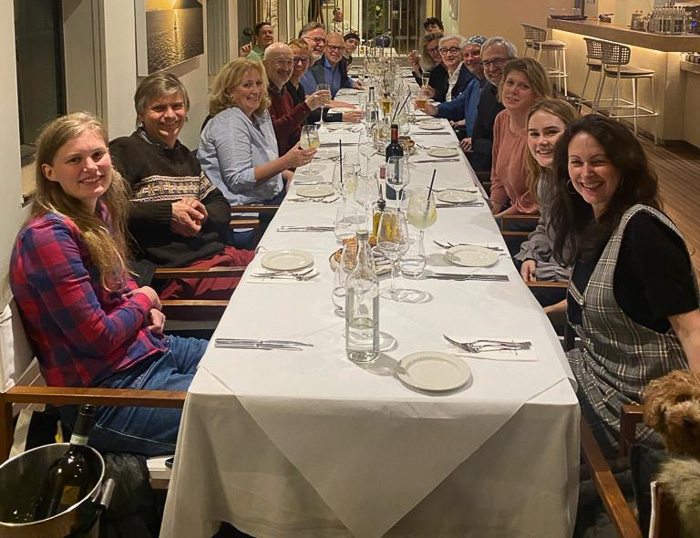
We heard of each other’s sailing experiences, adventures and aspirations.The group had real experience: Michel had competed a voyage from Sweden, via Scotland, the Bay of Biscay and the Atlantic all the way to to the Caribbean with his family. Nick had completed many Atlantic and Biscay miles on Regina Laska. David had sailed in The Solent and had great Channel hopping experience.
Socially-Markus (our team Doctor from Germany) had brought his lovely family who joined us each evening and mixed also with Leon’s family, with the new dog “Toffee” taking center stage.
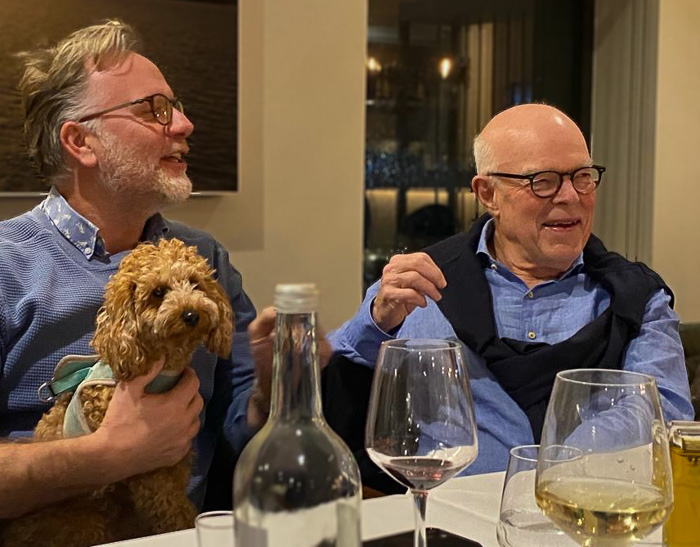
We discovered connections through boats, through our professional lives and through our plans for the future - and Jan chose the best wines!
Between more chart work, The final RYA very practical exercise was set on Sunday night, just as you would for a real voyage, make an appraisal of weather, tide, sea state, distance and hazards. Where are the tidal gates? Where are we constrained? What are the key times and heights of tide? What does the Almanac say? And the next day we created our plan, with Pilotage at each end and virtually “sailed” the trip, dealing with issues along the way.
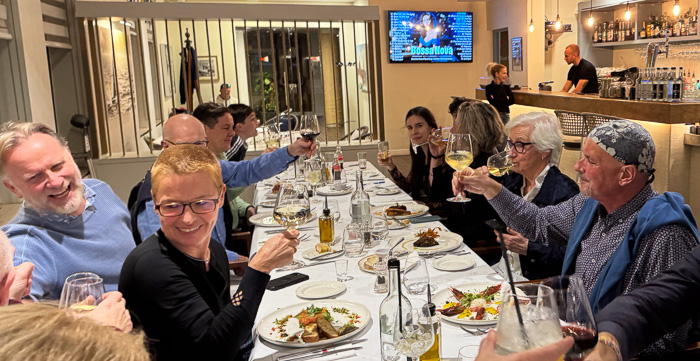
Inside one condensed week, everyone now had the confidence to undertake the detailed planning needed for such a trip, crucially to understand the impact of tidal timings and gates and when you need to arrive, or not arrive somewhere through lack of water, too much current, or an absolute requirement for slack water. Susanne became an absolute expert on tidal curves and time zone conversion. Bettina actually read the entire Almanac from cover to cover.
British sailors used to the Solent, who have ventured cross channel to Alderney and have planned to avoid the southerly pull of the Raz Blanchard or rounded Portland Bill at any time other than slack water, will understand what we learned - Swedish and Mediterranean sailors learning these key new skills for the first time.
It’s an excellent, friendly learning week! Its pace is quite high - there is a lot to get through, but the coffee is excellent, the setting lovely, the sunshine welcome and the instructor quite excellent. It’s a great way to expand your sailing network by making new friends with a shared experience.Thanks to all the crew for an amazing week.”
David Kinnaird, UK, RYA Yachtmaster Offshore shore-based course 2024
´
